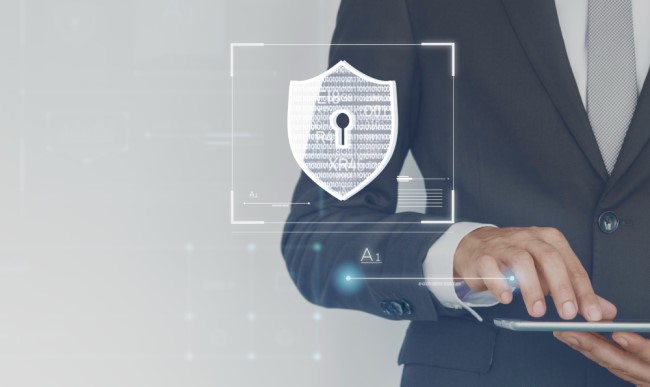Windows Device Security: Components & Features
Windows device security is a collection of protective software tools. These programs work together to accomplish a single goal- to keep the Windows device safe from a range of malicious attacks. Thus, Windows Security ensures hackers don't get unauthorized access to your device and maintains its integrity.
To harness the full protective power of Windows device security, you must properly understand its components and features. The following discussion can help you with that. You would also learn how to turn off this feature if the situation requires so.
Part 1 : What is Windows Device Security?
Device security is a complex, multi-layered system. This design makes the suite an effective shield against the multitude of modern cyber threats. Unlike third-party antivirus systems, you don't have to load Windows Security manually. Instead, it's an integral part of the OS and becomes active the moment you start using Windows. As a result, it keeps protecting your system from the very beginning.
There was a time when cyber threats mostly meant viruses. However, cybercrime has come a long way since then. Today a device is also at risk of worms, ransomware, spyware, rootkits, phishing attacks, etc the moment it goes online. Such malware can steal personal or a company's client information, dominate your data, and use it for blackmailing or destroying you financially and reputation-wise.
These malicious entities work by exploiting various types of vulnerabilities in your system. For instance, phishing attacks work by getting an unsuspecting employee to click a seemingly innocent email. Meanwhile, a rootkit remains in stealth mode so you have no idea of the existing infection until the damage is done. Device security recognizes all such vulnerabilities and actively takes measures to prevent their exploitation.

Part 2 : Key Components of Windows Device Security
Device Security is a concerted effort of six components. All of them play unique roles in saving your device from a range of cyber attacks. Learn about them in more detail to understand Windows Security better.
1 Core Isolation
Core isolation keeps the various running computer processes separate from the Operating system. At the same time, it also ensures the processes themselves don't have to interact with each other more than they need to.
As a result, if a cyber attack compromises one of the processes, it won't easily get hold of the other systems and the core OS. From this aspect, you can think of core isolation as a ' quarantine' for the different processes in your device.
Suppose, you have created a database of client information in your Microsoft Excel. Without core isolation, hackers can extract this information if they can somehow get unauthorized access to your browser. Core isolation prevents this by keeping your Excel and Browser separate.
Meanwhile, it also saves your device from crashing since it creates a barrier around the Operating System against the invading entity
2 Memory Integrity
This is actually a part of the Core Isolation feature in Windows Security. Its main job is to prevent harmful codes from running in the high-security process. This is made possible by running the Kernel Mode Code Integrity. Here, Kernel refers to the Core part of the OS.
The Memory Integrity component checks the Kernel mode drivers and the System files against a valid certificate. Thus, ensures alternate malicious versions of the files aren't running in the system. As a result, the integrity of the core is maintained. The component will prevent any code from running that isn't from a trusted Windows source.
You can enable Memory Integrity by navigating to Windows Security > Device security > Core isolation details > Memory integrity. However, the component might not function if your device doesn't match the hardware requirements, i.e., not updated to the latest versions.
3 Security Processor or TPM
The security process is the cryptography unit of Windows Device Security. It's a specialized chip that stores passwords, digital certificates, and encryption keys to strengthen the security of the OS. Plus, it can generate cryptographic keys that are exclusive to the chip and thus less susceptible to theft.
This component also measures the boot process in its entirety and reports discrepancies that seem like data breaches. Other functions of the chip include user and platform authentication, performing remote device health attestation, and license protection. It also provides data protection and fends off malware attacks.
4 Secure Boot
Secure Boot ensures that malware like rootkits can't affect your system during a boot. To establish this it blocks any boot component which isn't from the Original Equipment Manufacturer. Secure boot uses a three-step verification and cryptographic signatures to perform this function.
5 Hardware Security Capability
Your PC must support standard hardware security for the safeguards to work. To check the hardware security capability head over to Windows Security on your device. Tap on Device Security. All three features- Core Isolation, Security Processor, and Secure Boot will be turned on. Plus, the display will say that your PC meets the standard hardware security requirements.
You won't see the message if one or more of the options aren't turned on. This can also happen if the device has an older version of the TPM chip. A CPU that doesn't support DEP or CPU virtualization will also have the same effect since they are essential for Core Isolation and Memory Integrity.

Part 3 : Why Use Device Security In Windows?
The main reason to use device security in Windows is for protection against cyber attacks. Consequently, device security saves your company from data breaches, systems downtimes, malware infections, financial losses, and reputation damage.
1) Data breaches: hackers can steal your personal or business data once they gain unauthorized access to your device. Features like Bitlocker in device security prevent this by encrypting the data on your device. Thus, making it unreadable to hackers. Meanwhile, Windows Information Protection distinguishes important corporate data from general ones and prevents accidental leakage.
2) System Downtimes: This is one of the common consequences of cyber attacks. During downtime, your company loses valuable time and money. Core isolation and memory integrity can prevent this from happening by not letting multiple get compromised at the same time. Windows Defender Antivirus and Firewall can also guard against network-based attacks.
3) Malware Infection: Advanced malware can hide in your systems and keep stealing data. They also make the device vulnerable to further attacks. Secure boot neutralizes this malware as it only allows trusted software during a startup process. Also, Windows Defender Antivirus scans and removes malware in real time.
4) Financial and Reputational Damages: A successful ransomware attack can cost your business millions of dollars. On top of that, clients will lose trust in your company after a devastating security incident. Device security's Microsoft Defender SmartScreen can prevent such incidents by preventing company staff from entering phishing sites. Plus, the encryption and isolation features make it almost impossible for hackers to steal or use sensitive corporate data.
Part 4 : How to Turn off Device Security on Windows Devices?
Normally, you wouldn't want to put your Windows PC at risk by turning off device security. However, sometimes device security might incorrectly flag important files as threats. In that case, you have to turn it off to access those files. Follow these steps to do it-
Step 1: Click on the Windows icon at the bottom leftmost corner of your screen. This will give you access to the start menu.
Step 2: Find the gear-shaped icon and click on it. You have now entered the Settings menu.
Step 3: At the end of the Settings menu you will find ' Update and Security'. Click on it.
Step 4: From the following page select ' Windows Security'.
Step 5: Click on 'Virus and Threat Protection' and select 'Virus and Threat Protection settings'
Step 6: At the top of the page you will see the option 'Real-time Protection'. Toggle the switch beside it to turn off Device Security. You will also have to have to turn off 'Tamper Protection' from the same menu if it's turned off.
Remember, Real-Time Protection will automatically turn on after some time passes. However, Windows Device Security automatically turns off if you load a third-party antivirus software.
Part 5 : Common Questions
How to update my Windows device to ensure it has the latest security features?
Your Windows device must be updated to the latest security features for protection against the multitude of modern cyber threats. Windows 11 2023 update is the latest and most important update currently. To ensure your PC isn't falling behind follow these steps-
Step 1: Access the Start menu and select Settings.
Step 2: From there choose Update and Security and click on ' Windows Update'.
Step 3: You will see the option ' Get the latest Updates as soon as they are available'. Toggle the switch beside it to turn on the option.
Step 4: You can then click on ' Check for updates'. The device will search if any new updates are available, then download and install them.
What is Secure Boot, and how do I enable it?
Initially, Secure Boot will verify the firmware's digital signature. This reduces the risk of firmware rootkit. Afterward, it will verify the OS Bootloader's digital signature. Finally, Trusted Boot will take over and verify the digital signatures of the Windows Kernel and associated startup files. The system won't boot or enter a restricted mode if any of these checks fail.
Follow these steps to enable secure boot-
Step 1: Open the Start menu. Click on the Power Button > Restart while holding the shift key.
Step 2: Once the device restarts go to ' Troubleshoot' and select ' Advanced Options'.
Step 3: Select the 'UEFI Firmware Settings' and click on 'Restart'. Some PCs require a BIOS setup too.
Step 4: From Boot Options find ' Secure Boot' and toggle the switch beside it to turn the feature on.
Conclusion
Windows device security is like a vaccination for your device as it navigates through an internet ridden with cyber diseases. Just ensure you have enabled the settings correctly and are using the most up-to-date system. Be aware of your device security and it can save you from costly, devastating cyber-attacks.










Leave a Reply.